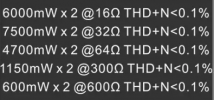staticV3
Master Contributor
- Joined
- Aug 29, 2019
- Messages
- 7,838
- Likes
- 12,522
60dB Average, 75-85dB Peak seemed like the most sensible "neutral" volume to me. What would you have chosen as reference, average SPL?Why is it that the 60dB line is the only one that looks correct? (slight rhetorical question) Have you just arbitarily set 60dB to be frequency response baseline
Participants were allowed to set volume by themselves and absolue SPL was not part of the Harman target study I'm told, so a Harman specified reference SPL does not exist.I think it would be more useful/representative to set whatever dB level the Harman Curve was designed to be played at by the Harman creators of that research - so I don't know - what volume in dB did they set their headphones to during the study?
BTW, no matter what SPL I'd have chosen as reference, the resulting +40dB tonality would've remained largely the same:

Last edited:


